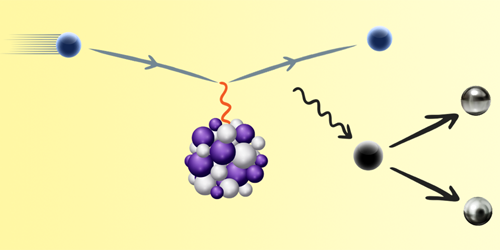Careful Accounting Could Reveal the Dark Sector
Physicists searching for dark matter are gradually losing confidence in the one-time favorite candidate—the weakly interacting massive particle (WIMP) (see Meetings: WIMP Alternatives Come Out of the Shadows). An alternative theory posits a host of dark-matter particles—a “dark sector”—that interact with regular matter not through the weak force, like WIMPs, but through a new interaction mediated by an undiscovered boson. The theory also suggests that this boson might explain another conundrum—the discrepancy between the measured and predicted values of the muon’s anomalous magnetic dipole moment (see Special Feature: The Muon g–2 Anamoly Explained). A new proof-of-principle experiment at CERN in Switzerland now constrains the properties of the dark sector and casts doubt on the hypothetical boson’s role in the g–2 anomaly [1].
The experiment, called NA64, involves slamming high-energy muons into a stack of alternating layers of lead and of a “scintillator” material. Such a target allows the detection of secondary particles that are created when muons collide with lead nuclei. Usually, researchers seek new particles by spotting their decay products among this subatomic debris. But if the particles are part of the dark sector, they would barely interact with regular matter, so they would generally escape undetected.
To close this observational loophole, the NA64 team measures the total energy of the detected particles and compares it to the energy delivered by the muon beam. If a muon–lead interaction produces a dark-sector boson, the energy it smuggles out of the detector should show up as a discrepancy in the final accounting. In NA64’s initial run, involving 1010 muons, the researchers found no such discrepancy. After upgrades during the next CERN shutdown, the researchers hope to acquire 2000 times more data, which will allow them to search the parameter space more thoroughly.
–Marric Stephens
Marric Stephens is a Corresponding Editor for Physics Magazine based in Bristol, UK.
References
- Yu. M. Andreev et al. (NA64 Collaboration), “First results in the search for dark sectors at NA64 with the CERN SPS high energy muon beam,” Phys. Rev. Lett. 132, 211803 (2024).




